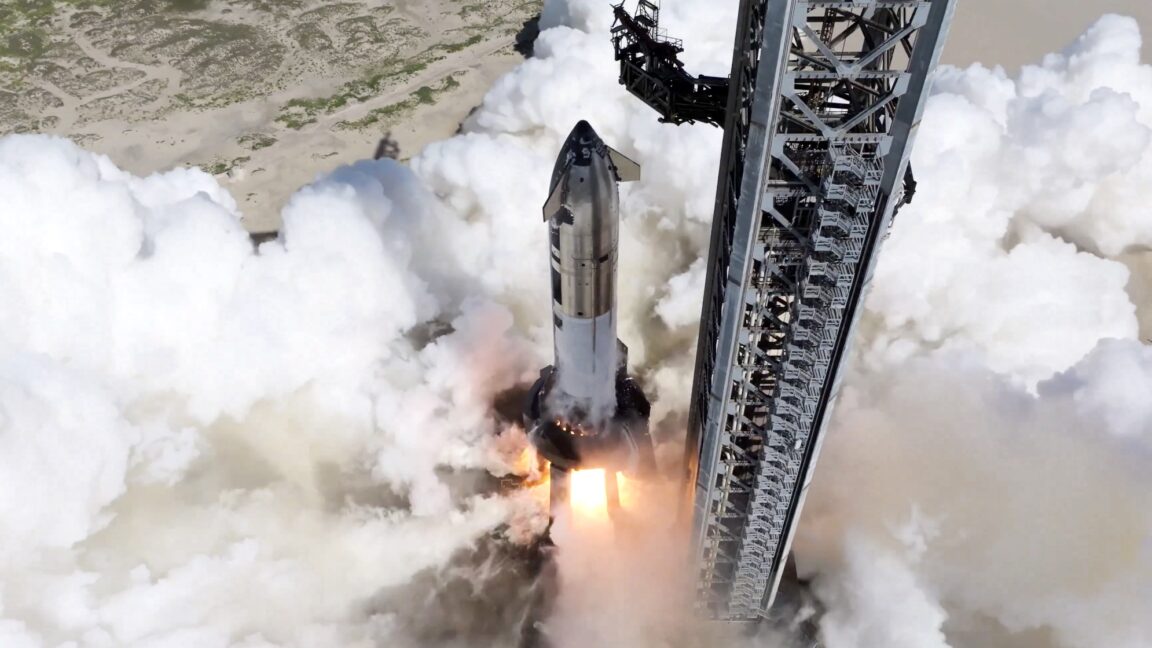when the rocket started leaking propellant after reaching space
Oxygen or methane?
The final mishap report cites the probable root cause for the loss of the Starship vehicle as a failure of a fuel component.
Oxygen or methane?
How much?..
The article states that the failed component was located on the forward dome, which is the top end of the methane tank.
…oxygen isn’t a propellant
Perhaps if you had read just a little further into the article you would have discovered the answers to your questions that were presented there.
Oh you mean this paragraph?
The rocket compensated for the drop in main tank pressure and completed its engine burn, but venting from the nose cone and a worsening fuel leak overwhelmed Starship’s attitude control system. Finally, detecting a major problem, Starship triggered automatic onboard commands to vent all remaining propellant into space and “passivate” itself before an unguided reentry over the Indian Ocean, prematurely ending the test flight.
Nowhere do I see what exactly was leaked or how much. If we’re using rocket terminology ‘propellant’ means methane, oxidizer means oxygen so I’m guessing they mean methane? Why doesn’t the article say it was methane and couch it behind terminology? How much ‘substance’ was ‘vented’?
Perhaps you could quote the part where they specify what the leak was and how much?
Personally I’m entirely used to reading “propellant” as “the stuff that gets oxidized in the motor” in space communication, and it’s not our of the ordinary for what I’d expect from Ars. Eric Berger there tends to write more layperson-friendly articles.
In any case, they later use the word “fuel” repeatedly. Some clarification may have been nice but it’s just not a big deal IMO.
As for how much, my expectation would be SpaceX didn’t share. They used to be a little more open, but… Well, Elon certainly isn’t any less of a dickhead than he used to be.
deleted by creator
deleted by creator
deleted by creator
Perhaps you could quote the part where they specify what the leak was and how much?
Then you need to read the article again. I’m not going to quote the part where they specifically say what part failed and what tank it was attached to, which should give you a very big clue as to whether it was methane or LOX.
Unfortunately, the *precise *volume in cubic metres wasn’t specified. The effect that it had on the nosecone and temperatures of various sensors in the nosecone was mentioned, which implies it was more than just a trivial leak. The loss of the ship also implies that.
edit: Oof my instance is slow today, multiple duplicated comments deleted.
It’ll be even funnier if it happens a third time.
Laughs in apocalypse.
What if it’s carrying the nuclear moon-fuel?
It wont be, too many failures to do such a stupid thing
SpaceX identified the most probable cause for the May failure as a faulty main fuel tank pressurization system diffuser located on the forward dome of Starship’s primary methane tank. The diffuser failed a few minutes after launch, when sensors detected a pressure drop in the main methane tank and a pressure increase in the ship’s nose cone just above the tank.
Engineers recreated the diffuser failure on the ground during the investigation, and then redesigned the part to better direct pressurized gas into the main fuel tank. This will also “substantially decrease” strain on the diffuser structure, SpaceX said.
I’m having difficulty visualising what this “diffuser” looks like. Is it part of the autogenous pressurisation system? Do any photos of it exist?
Imma have to defer to CSI Starbase for this one 😅
I found some info! It is indeed part of the autogenous pressurisation system.
Diagram from mcrs987:

Photo from megagoose11 / Kevin Randolph:

Someone also dredged up a 189-page PDF on Designing and Optimization of Pressurizing Gas Diffusers in Cryogenic Methane Tanks: A Technical Approach if you’re really interested :)
Edit: Also, direct links to the Flight 9 and Ship 36 report (archive) and the Flight 10 webpage (archive).
Well, I took the plunge. From the thesis:
The diffuser introduces the pressurant gas into the propellant tank as a critical component of the pressurization system in a liquid propulsion engine. Element present in both pressurization systems (self-pressurization and by inert gases), the diffuser makes the pressurant enter the propellant tank at a desired direction and velocity to keep the pressure inside the tank at the design level during the pressurization activities without the engine working (on-ground operations or during coasting phase) and to avoid the creation of zones where the operating pressure falls below a threshold value of NPSH during engine firing.

Hell yeah, great work. Thanks for reporting back, I was very curious about this too!
Removed by mod








